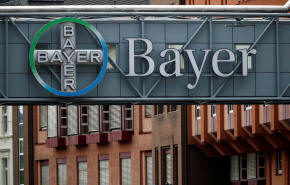Bayer reaches $80 million PCB contamination settlement with Ohio
 Send a link to a friend
Send a link to a friend
 [March 25, 2022]
By Tom Hals [March 25, 2022]
By Tom Hals
(Reuters) - Bayer AG reached an $80 million
settlement with Ohio to resolve environmental damage allegedly caused by
polychlorinated biphenyls, or PCBs, made by the company's Monsanto
business, the state attorney general said on Thursday.
The funds from the German company, which did not admit liability, will
be used for environmental cleanup, the attorney general said.
Monsanto, which Bayer acquired for $63 billion in 2018, never
manufactured PCBs in Ohio or discharged them into Ohio waterways, Bayer
said in a statement.
PCBs were once used widely to insulate electrical equipment, and were
used in carbonless copy paper, caulking, floor finish and paint. They
were outlawed by the U.S. government in 1979 after being linked to
cancer.

Bayer has been trying to resolve a number of lawsuits related to
Monsanto's PCBs, which were used in commercial products from 1935 until
1977, when Monsanto voluntarily ceased production.
In addition to reaching legal settlements with states, the company
reached a $648 million proposed class action settlement with about 2,500
cities and other local governments eligible as members of the class.
Last week the agreement received preliminary approval from a federal
judge.
[to top of second column]
|

A bridge is decorated with the logo of a Bayer AG, a German
pharmaceutical and chemical maker in Wuppertal, Germany August 9,
2019. REUTERS/Wolfgang Rattay
 Class members must decide whether to
support the deal, object to the terms or opt out and pursue their
own case, as the city of Los Angeles did earlier this month.
Bayer can withdraw from the settlement if more than 2% of the class
members opt out.
Bayer also faces personal injury cases stemming from PCB exposure.
Two separate juries last year awarded a combined $247 million in
damages stemming from exposure in a school in Washington state.
Bayer said the evidence showed the plaintiffs were not exposed to
unsafe levels of PCBs and the company said it planned to appeal both
verdicts. (This story corrects paragraphs 5 and 6 to show there are
about 2,500 members eligible for the class action, not thousands of
separate lawsuits)
(Reporting by Tom Hals in Wilmington, Delaware; Editing by Susan
Fenton)
[© 2022 Thomson Reuters. All rights
reserved.] This material may not be published,
broadcast, rewritten or redistributed.
Thompson Reuters is solely responsible for this content.
 |